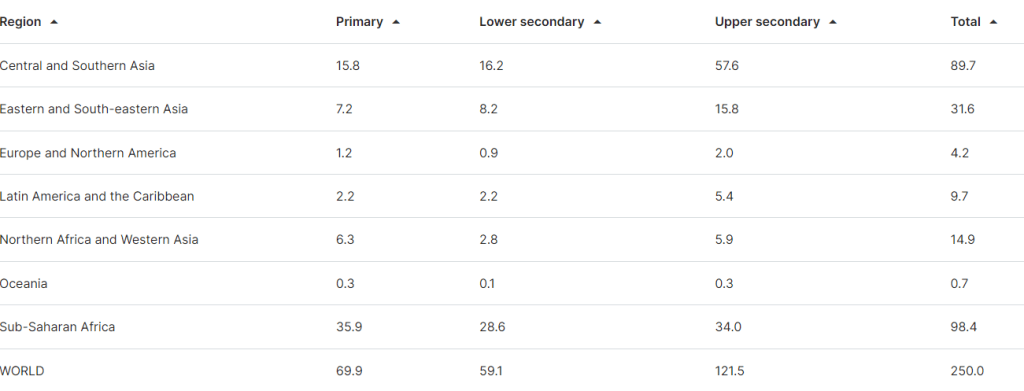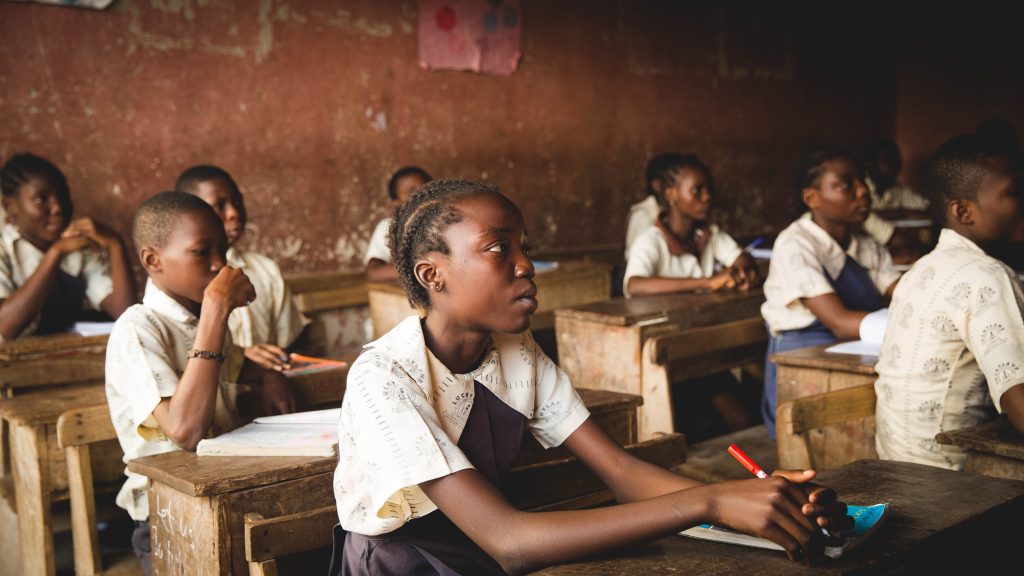In many developing countries, boys and girls don’t always get the same chances in life. This happens for different reasons, like not being able to go to school or not getting good jobs. Sometimes, the way people think about boys and girls also causes problems, like hurting others because of their gender. This makes education like a spark that starts a fire for fairness. By teaching kids from an early age that everyone is important, no matter if they are a boy or a girl, we are creating a new way of thinking. Education is like a key to unlocking opportunities and achieving gender equality.
When girls and women can go to good schools, they learn important things and gain skills. This not only helps them know more but also makes them stronger and more able to make choices for themselves. When people can challenge old ideas about what boys and girls should do, it makes a big difference. It’s not just about school; it’s about changing how everyone thinks and acts in communities. In this blog, we’ll learn about how education is breaking down barriers and helping to build a world where everyone has the same chances.
Gender equality in education
In general, gender equality is the idea that men and women should have equal conditions, treatment, and opportunities to reach their full potential, exercise their human rights, and uphold their dignity. In education, gender equality means ensuring that both girls and boys, as well as men and women, are provided equal opportunities for education. This involves access to the same resources and expectations of success. Additionally, gender equality in education implies creating an inclusive, responsive, and empowering school system that caters to the needs of all students, irrespective of their gender.

Source: Unsplash
Why is there an education gender gap in developing countries?
The gender gap in education in the developing countries is a complex issue influenced by various interconnected factors. While progress has been made in recent years, disparities in access to and completion of education persist between boys and girls. Some key reasons for the gender gap in education in developing countries include:
Conflict and Instability
Regions affected by conflict often face disruptions in education, with girls being disproportionately affected. Conflict can lead to the closure of schools, displacement, and increased security risks. Also, this puts females at risk of school-related gender-based violence and targeted attacks. Further hindering girls’ access to education.
Child, early, or forced marriages (CEFM)
Approximately 12 million girls under the age of 18 are estimated to be married annually. In the least developed countries, that number doubles, 40 per cent of girls are married before age 18, and 12 per cent of girls are married before age 15. Hence, girls who experience CEFM are at a higher risk of encountering domestic violence and early pregnancies, compelling them to discontinue their schooling.
Early pregnancy
Approximately 18 million adolescent girls worldwide give birth annually, a circumstance often associated with the curtailment of their education. Hence, the likelihood of these girls returning to school diminishes.
Economic Barriers
Financial challenges, including poverty, can prevent families from sending their children to school. In many cases, families may prioritise the education of boys if they have to make a choice due to financial constraints , allocating limited resources to education.
Limited Awareness and Advocacy
Lack of awareness about the importance of girls’ education and limited advocacy efforts can contribute to the persistence of gender disparities. Unfortunately, communities do not always understand the long-term benefits of educating girls and breaking down gender stereotypes.
Distance to Schools
In rural areas, the lack of accessible and safe transportation can be a significant barrier, especially for girls. Schools may be located far from home, making it difficult for girls to travel, particularly if safety concerns are present.
Globally, 16% of children and youth, spanning from primary to upper secondary levels, are currently not enrolled in school. At the primary level, one in ten children globally is not attending school. Of the total out-of-school population, which amounts to 122 million, 48% are girls and young women. Sub-Saharan Africa contributes nearly 30% to the global number of out-of-school children, with one in five African children (19.7%) not participating in formal education. Additionally, only half of the children attend upper secondary school.

How to achieve gender equality through education?
Achieving gender equality through education involves implementing a multifaceted approach that addresses various aspects of educational systems and societal attitudes. Here are several key strategies:
- School Curricular change
Addressing gender inequality through changes in school textbooks involves a comprehensive overhaul of content to eliminate stereotypes and biases. Textbooks should depict diverse and empowered representations of both genders, showcasing women and men in various roles across history, science, literature, and other subjects. The language used should be inclusive and avoid reinforcing traditional gender norms.
- Provide safe learning environment for girls
Schools must ensure the safety of girls, shielding them from physical and sexual violence, as well as gender-based bullying, including teasing related to menstruation. In Senegal, one in eight girls reports experiencing sexual harassment by a teacher or staff member. While in countries like India, the Democratic Republic of Congo, and Nigeria, millions of adult women report that a teacher raped them during their school years.
It is necessary to implement policies within educational institutions that prevent and address gender-based violence. Policies are needed to provide counselling and support services for victims of gender-based violence, and to create a safe reporting system.
- Empowerment through Skills and Knowledge
Offering vocational and skills-based training programmes that empower girls and women to enter a variety of fields, including traditionally male-dominated ones, is essential to achieve gender equality. Also, it is important to incorporate life skills education, including financial literacy and entrepreneurship, to enhance women’s economic independence.
- Community Engagement and Awareness
We need to initiate awareness campaigns to shift societal attitudes and challenge gender norms that sustain inequality. We can do this by engaging community leaders and local influencers to endorse education that is inclusive of all genders. Raising gender awareness involves delivering reliable information to foster a deeper understanding of gender equality
Why is it essential that we focus on Education for Gender Equality?
Girls’ education yields advantages for both individuals and nations. Women with higher levels of education tend to possess greater knowledge about nutrition and healthcare, have fewer children, marry later in life, and often raise healthier children if they choose to become mothers. Moreover, educated women are more inclined to engage in the formal labour market, leading to higher income levels.
According to a study by the World Bank, the ”limited educational opportunities for girls and barriers to completing 12 years of education” result in a substantial economic cost, estimated between US$15 to $30 trillion in lost lifetime productivity and earnings. The cumulative impact of these factors has the potential to uplift households, communities, and entire nations out of poverty.

Source: Unsplash
moving forward
Promoting gender equality by education in developing countries necessitates a comprehensive approach encompassing strategies such as, ensuring equal access to quality education for both genders. Also, by eliminating gender stereotypes through curriculum development and teacher training. On the other hand it is essential to provide financial incentives and scholarships to overcome economic barriers, implementing empowerment programs and vocational education.
In addition, we need to actively advocate for gender-responsive policies at various levels and actively foster global partnerships for sharing best practices and resources. Furthermore, we must actively implement community awareness campaigns. The success of these efforts relies on sustained collaboration among governments, civil society, international organisations, and local communities to address the diverse challenges. Hence, promote inclusive and equitable education systems.
achieving the United Nations Sustainable Development Goals (SDGs) and how they link to Education for Gender Equality
Education for gender equality is a cross-cutting theme that is integral to achieving multiple SDGs, including those related to education (Goal 4) and gender equality (Goal 5). It is recognized that progress in education is interconnected with broader societal goals. Education for gender equality is closely linked to several aspects of the SDGs:
- Goal 4: Quality Education: By ensuring that both girls and boys have access to quality education through breaking down gender barriers. This includes not only access to education but also the quality of education. Which involves addressing issues such as gender biases in textbooks and supportive learning environment for all.
- Goal 5: Gender Equality: Education plays a crucial role in achieving gender equality by empowering women and girls. As well as, providing them with the skills and knowledge needed to participate fully in all aspects of society. Education helps challenge traditional gender roles and stereotypes. Hence, fostering an environment where both women and men can contribute equally to social, economic, and political development.
A Thrivable Framework
At THRIVE, our framework extends beyond sustainability to embrace the concept of “thrivability”. The THRIVE Framework examines issues and evaluates potential solutions that can support the education and gender equality worldwide. The THRIVE platform is scale-linked, values-based, context-based, and science-based, informed by the natural sciences. Register for our Thrivability Matters Webinar Series where we address the challenges of sustainable development. You can follow our informative blog and extensive podcast series. also you can Sign up for our newsletter to receive regular updates.























